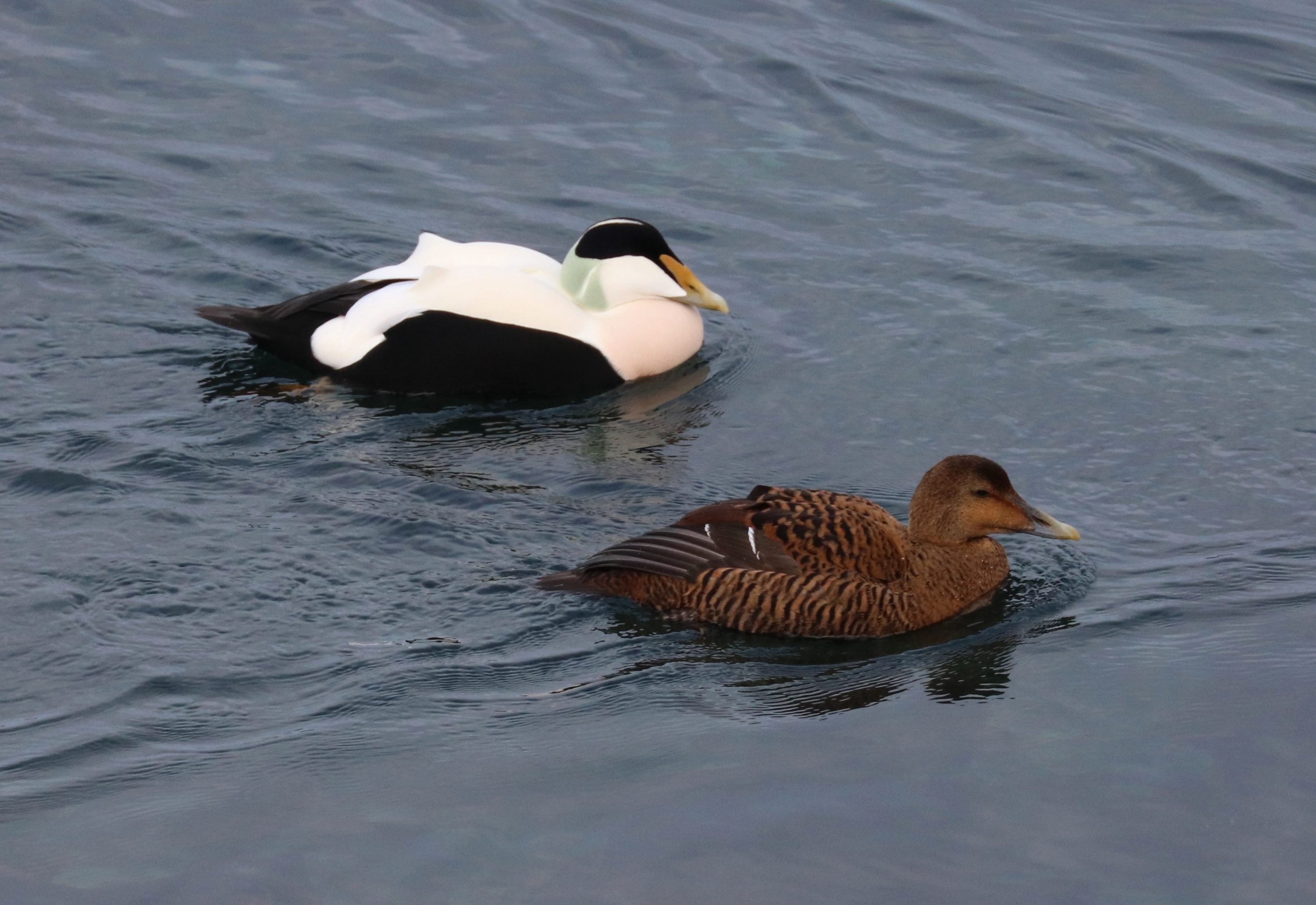The Common Eider (Somateria mollissima borealis) is a large seaduck of the Merginae family. The Eider is one of few Anatidae that occupy the marine environment in Iceland all year round and thus shares many characteristics with seabirds rather than ducks. For instance, Eiders have salt glands like Alcids and gulls to excrete salt when drinking from the sea. There are 5-6 Eider subspecies in the world but the Icelandic Eider also lives in northern Canada, Greenland, Svalbard, and on Franz Josephs Island.
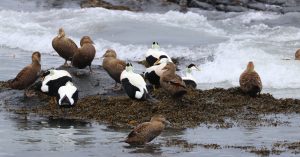
The Breeding Period is Challenging
The Icelandic Eider population is one of the largest bird populations in Iceland. It consists of about 250 thousand breeding pairs, or 970 thousand birds in the fall. Most Eiders pair in the fall or early winter. The male protects its female companion from the harassment of other male birds so that she can feed and build up energy reserves for the upcoming nesting period. Eiders feed on a large variety of benthic invertebrates but mussels, small snails, clams, and chitons are their favorite around Iceland. They also consume crabs, sea urchins, starfish, and even small fish and fish eggs. Eiders mostly feed 2-5 meters below the ocean’s surface, but they can dive at least 42 meters.
Female Eiders increase their body mass about 20% prior to nesting and are in good shape when they start egglaying in May or June. They need the extra energy to incubate 3-6 eggs for 24-26 days, all alone and without feeding. During the incubation period, an Eider mother stays on its nest 90-97% of the time and it loses about 25-45% of its body weight. Many Eiders cannot meet these extreme energy demands and abandon their nests in poor physical condition.
When Eider ducklings have fledged, they stay in the nest with the mother for 24h before heading out on the sea. The ducklings feed mostly on small crustaceans (Gammarus sp.) and small snails for the first weeks. The Eider mother often leaves its ducklings after fledging. This is where other non-breeding Eiders, which we call aunts, step in and attend to the brood while their real mother feeds to regain its energy levels. A few aunts often stay together and take care of many broods, often 15-100 ducklings all at once, which we then call a crèche (or nursery).
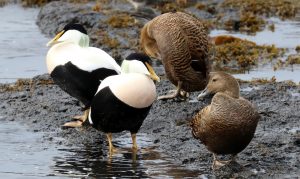
Five Warm Facts about Eiders
- Icelanders have collected eiderdown for centuries. The first law against hunting eiders was passed in the year 1786 but it was forbidden altogether in 1847.
- Wild eiders can reach quite an old age. Scientists have observed a marked Icelandic eider incubating eggs in its late twenties.
- Eiderfarmers replace the down they collect with dry hay to keep the nests well insulated. Down farming does not have a negative impact on breeding birds.
- Eider ducklings only stay in their nest for 24h after fledging before heading out to sea to feed. Non-breeding eiders often join the ducklings at sea and protect them from predators. Those “aunts” lead the ducklings to good feeding sites.
- Icelanders collect, clean, and sell about 80% of all eiderdown in the world!
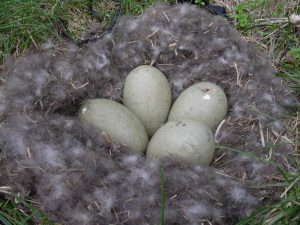
Precious Down
Eiders become mature at the age of 3-5 years and return to their fledging area to nest. The females control the nesting site, so males often follow their females long distances to their brooding area. The eider nest is a remarkable phenomenon. Shortly before egglaying, a female Eider begins losing down from its belly area, which it then collects and uses to insulate its nest. The eiderdown has an exceptional insulation ability and keeps the temperature in the nest very stable in the Arctic weather extremes.
People learned to appreciate eiderdown early on and started collecting it from Eiders’ nests. They used it to make warm duvets, sleeping bags, and clothes. Icelanders are a leading nation in eiderdown production. About 80% of all eiderdown in the world is originated in Icelandic eider nests. Contrary to popular belief, the down collection does not have a negative impact on Eiders. Eiderfarmers insulate the nest with hay as they collect the down and care for each Eider with great respect. The Common Eider is without a doubt the most valuable bird in Iceland and is protected more than most other birds.
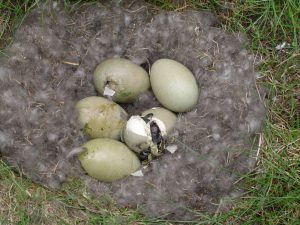
Eider Links Worth a Click
- The website of the Icelandic Eider Center
- Great insight into Eiders’ life at All about Birds’ website
- A video about Eider farming in Iceland
- More articles
Author: Dr. Þórður Örn Kristjánsson & Photographer: Dr. Jón Einar Jónsson

